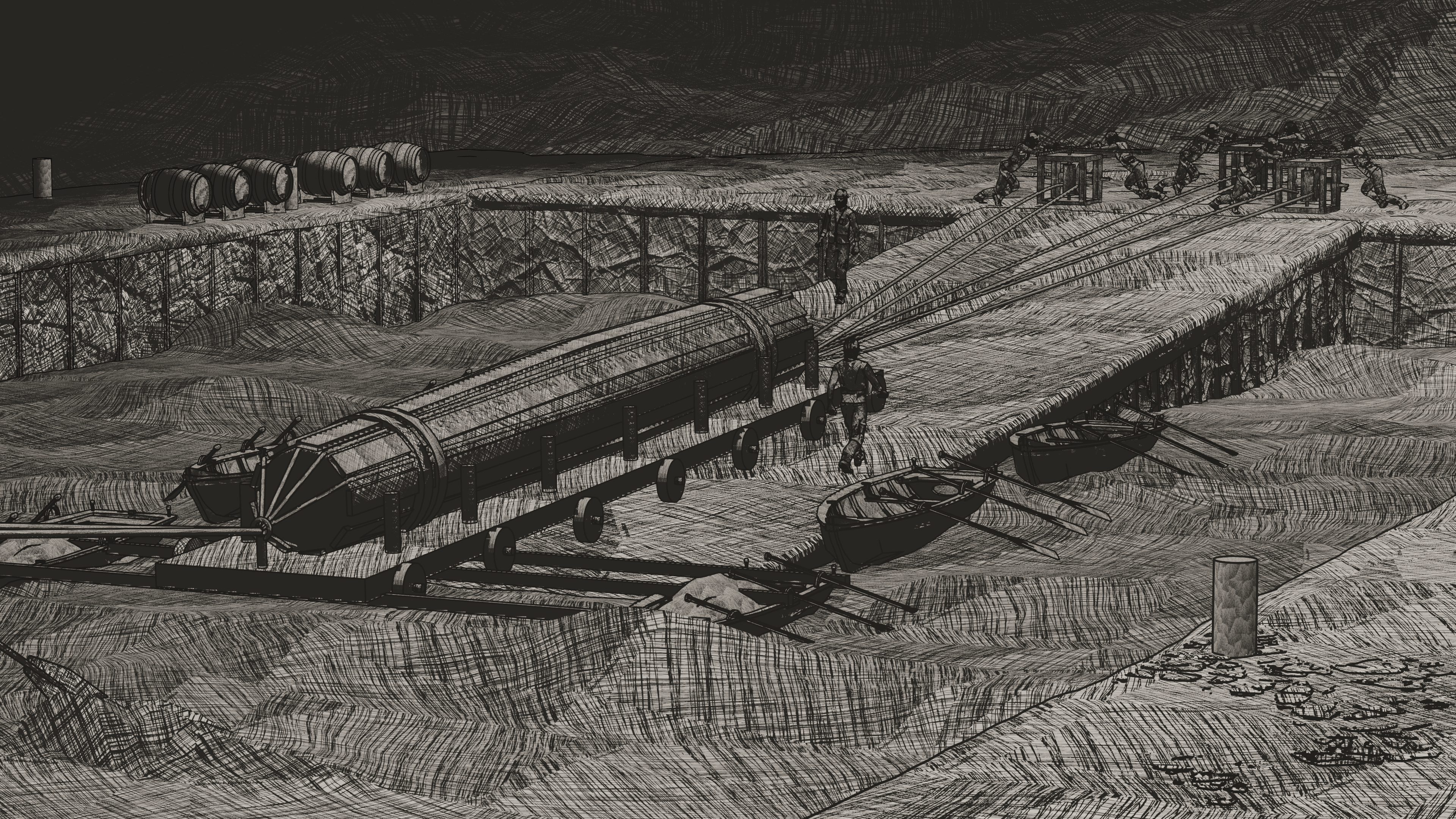Cart as floating device:
Mariano Taccola’s De Ingeneis
The traditional method for transporting columns to a harbor involved complex machinery to load them onto a barge or seagoing vessel, risking damage during transfer. Mariano Taccola proposed a novel approach in 1433, suggesting the use of the same cart used for land transportation as a flotation device. The cart, loaded with the column, would be placed on a series of barges, eliminating the need for lifting. Francesco's drawings also hinted at a similar idea.

However, both Taccola and Francesco's accounts lacked specifics on moving the cart from the elevated quay to the water and the positioning onto the network of barges. This conceptualization suggests using an inclined plane and Francesco's winches. The cart would gradually descend the slope, with winches lowering it and propelling it onto the barges. However, this approach had challenges, including a gap between the cart and the slope and potential instability at sea.
Animation
This method might have been suitable for river transportation but faced significant challenges for open-sea voyages. Romans used lightweight materials to immobilize columns within ships to prevent damage, suggesting the floating cart was best suited for rivers with less demanding conditions.